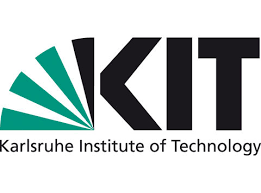Karlsruhe Institute Of Technology Researchers Optimize Energy Transition With Hydrogen From The Roof
Producing hydrogen, fuels and even drinking water efficiently on roof surfaces or in solar parks – researchers at the Karlsruhe Institute of Technology (KIT) and their Canadian partners want to make this possible with inexpensive photoreactor modules. They have now made important progress. They report their results in the journal Joule ( https://doi.org/10.1016/j.joule.2023.05.006 ).
In artificial photosynthesis, chemical reactions are carried out using sunlight. As with the natural model, photons are absorbed by a photocatalytically active material in such a way that their energy directly drives a chemical reaction. “Various photocatalysts are now known. For example, they can be used to split water into hydrogen and oxygen, but they can also be used to produce climate-neutral fuels from water and carbon dioxide,” says Paul Kant from the Institute for Micro Process Engineering (IMVT) at KIT. So far, however, the technology has mainly been found in the laboratory because the costs of producing solar hydrogen were simply too high. With a concept for highly efficient photoreactor panels that can be installed in cost-effective modules, However, the research group has now taken a decisive step towards practice. Kant considers the large-scale use of such innovative photoreactor modules on house roofs or in solar farms for the production of hydrogen or fuels to be one of the great technological opportunities for mankind in the fight against the climate crisis: “This could simply make the use of fossil fuels superfluous.” Kant was in charge of the research work during his PhD with Professor Roland Dittmeyer at the IMVT. They are part of the Helmholtz program Materials and Technologies for the Energy Transition. Kant considers the large-scale use of such innovative photoreactor modules on house roofs or in solar farms for the production of hydrogen or fuels to be one of the great technological opportunities for mankind in the fight against the climate crisis: “This could simply make the use of fossil fuels superfluous.” Kant was in charge of the research work during his PhD with Professor Roland Dittmeyer at the IMVT. They are part of the Helmholtz program Materials and Technologies for the Energy Transition. Kant considers the large-scale use of such innovative photoreactor modules on house roofs or in solar farms for the production of hydrogen or fuels to be one of the great technological opportunities for mankind in the fight against the climate crisis: “This could simply make the use of fossil fuels superfluous.” Kant was in charge of the research work during his PhD with Professor Roland Dittmeyer at the IMVT. They are part of the Helmholtz program Materials and Technologies for the Energy Transition.
Optimized reactor concept for the mass market
An efficient photoreactor module for practical use must essentially have two components: On the one hand, a suitable photocatalyst must be available that drives the actual chemical reaction. On the other hand, a photoreactor must be available, i.e. a “container” for the photocatalyst and the starting materials for the chemical reaction. “The photoreactor should ideally conduct incoming sunlight to the photocatalyst with little loss, regardless of the direction it is coming from or where the sun is in the sky,” explains Kant ensures the photocatalyst, such as the right temperature or the right intensity when absorbing light at the photocatalyst. which are coated with aluminum for high reflectivity and enables both optimal operating conditions and efficient transport of light to the photocatalyst throughout the day. The researchers developed the system using computer-aided geometry optimization and a photocatalytic model system and have already been able to demonstrate it on a laboratory scale. which are coated with aluminum for high reflectivity and enables both optimal operating conditions and efficient transport of light to the photocatalyst throughout the day. The researchers developed the system using computer-aided geometry optimization and a photocatalytic model system and have already been able to demonstrate it on a laboratory scale.
Cost reduction through inexpensive modules
On the basis of a generally applicable guideline, which the researchers developed on the basis of a detailed analysis of their reactor concept, future photoreactor modules can now be designed relatively easily for maximum efficiency for different purposes. However, high efficiency in the chemical reaction is only part of the challenge to establish artificial photosynthesis as an economical technology. For relevant product quantities, extremely large areas have to be covered with photoreactor panels. “In order to reduce costs, we use inexpensive materials and geometries that can be manufactured using established mass production processes,” says Kant. According to initial calculations, the researchers estimate the price at around 22 US dollars per square meter of photoreactor module.
In further work under the leadership of Anselm Dreher, a suitable photocatalyst that efficiently splits water into hydrogen and oxygen is now being developed at the IMVT in Karlsruhe and in the working group headed by Professor Geoffrey Ozin in Toronto. The photocatalyst is then integrated into the photoreactors presented. Furthermore, current work includes investigations into the mass production of the presented panels.

